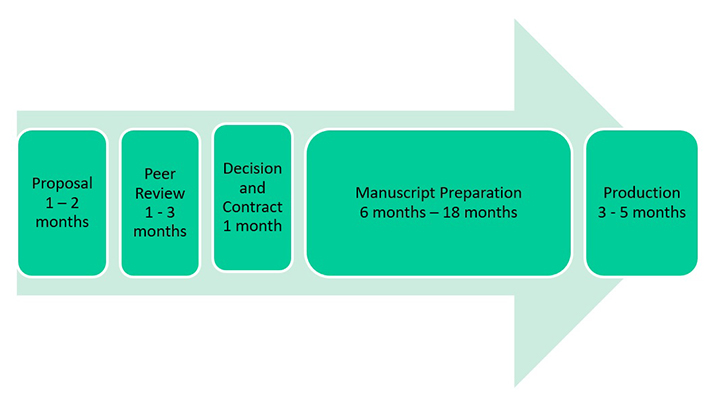Why Author or Edit a Book?
So why consider writing or editing a book in the first place? Two compelling motivations are that the writing of a book helps to establish the author as a thought leader in a specific field while, at the same time, providing an enduring legacy in print and online. Another reason is that as a topic matures the size of the potential readership increases. At the beginning, publications in a new emerging topic tend to be journal and conference papers aimed primarily at researchers. In time, as the topic develops, there is scope for authored monographs, professional and reference texts, advanced graduate-level texts and eventually junior level undergraduate textbooks – illustrated in the diagram below.

Books also represent an excellent way in which to facilitate knowledge transfer to industry. Short books in particular can serve as a primer or briefing on a particular technology or topic.
One of the biggest constraints facing prospective authors and editors is lack of time. To overcome this hurdle, we are developing a portfolio short books which allow for faster authoring and publishing schedules. Short books are typically 60–140 pages and priced competitively in both print and electronic formats.
Why publish with IWAP?
I am often asked why publish a book with IWAP. Alternatives do exist of course. However, commercial publishers simply do not have same focus on Water, Wastewater and the Environment as IWAP and nor do they have access to the IWA membership. Moreover IWA Publishing is a brand leader in water and, as a not-for-profit organization, surplus income goes to IWA. You can find a more complete list of the benefits of publishing with IWAP by clicking here.
How to publish a book with IWAP
The first step is to prepare a book proposal for review (template available to download here). Particular care should be taken in detailing the target readership, for example, is it a research monograph for researchers or a graduate level text which can also serve as a reference for practitioners. Very rarely can a book bridge multiple readerships and be relevant to readers across the career arc, i.e. from undergraduate students through to practitioners and researchers.
The completed proposal form is sent out for peer review to 4 to 6 subject experts around the world. The reviews are shared anonymously with the author/editor and the proposal is revised if necessary. Subject to internal approval, a contract is issued for the book. A key variable in the contract is the delivery date of the manuscript, which typically falls in the range of 6 to 18 months from signature of the agreement. In my experience it is always best to agree on a realistic date delivery date, one that both the publisher and the author are comfortable with. Make sure to take a look at our Guidelines for Authors.

Can I publish my book Open Access?
The short answer is yes. IWAP is committed to the rapid and global dissemination of high quality research and practice through OA for book and journal content. We offer a number of different options to authors and contributors looking to publish their work OA, as either:
- Individual chapters in an edited volume
- Entire edited volume
- Monograph and reference works
You can find out more about types of Open Access in my colleague’s blog post, "What do I need to know about Open Access?", or see our page for Open Access books (https://www.iwapublishing.com/about-us/author-centre/iwa-publishing-open-access-policy-books).
If you have an idea for a book or wish to know more about Open Access book publishing then do please contact me.
Mark Hammond (mhammond [at] iwap.co.uk).
